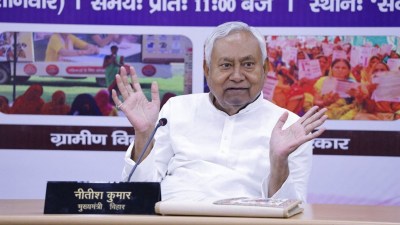Nursing exports
The package for boosting exports announced by Commerce Minister Ramakrishna Hegde is to be welcomed, even though its efficacy is by no me...

The package for boosting exports announced by Commerce Minister Ramakrishna Hegde is to be welcomed, even though its efficacy is by no means assured.
At worst, it is an indication of a focus on strengthening a sector which has played an increasingly significant role in economic growth in recent years.
That trend was unfortunately reversed last year, when exports grew by only about six per cent after growing at 18-20 per cent in dollar terms for several years. But what has happened in April-June — a fall of 8 per cent in exports — is frankly alarming.
The package represents a triumph of the Commerce Minister in persuading his counterpart in the finance ministry of the case for making life easier for exporters, which the latter simply forgot to do in his Budget.
That said, it remains to be seen how well the package works. The reasons for this scepticism are many.
First, it is not a figment of the government’s imagination that the international trade scenario is bad. Two of the world’s remarkableexport power houses — the US and China — have not been doing well on the export front either. The prime reason, of course, is the Asian crisis which has afflicted East and South East Asia since last July. Their crashing currencies have made their exports far cheaper than their competitors’, while raising their cost of imports. This means that India loses both in its exports to this region, and to third regions to which its exports overlap with these countries’. Other countries have had the same experience. It was no coincidence that world-trade growth slowed down very sharply last year after years of smartly outstripping world economic growth.
So much for the international scene. But there are enough internal reasons why the incentives may not take off as well as they are hoped to do.
First, any initiative such as this one will show its effect only after a time lag. It is good for its own sake, but it is highly doubtful that it will help achieve the target growth of 20 per cent this year, unless this ismanipulated and projected in rupee terms after citing growth in dollar terms all these years. It behoves the government to show both more honesty and realism on this score.
Next, it is hard to see why banks, left to themselves, should opt to lend to exporters at lower interest rates than they do to other clients. They would much rather not lend to exporters at all, which would leave exporters’ credit problem where it was.
Three, unless India’s overall infrastructure — roads and ports and communications and so on — makes a quantum leap, thereby causing sharp growth through elimination of systemic inefficiencies or slack, slower export growth in the future is logical because the base is now higher.
It was easy for India to double its exports in half a decade when its total exports were pathetically low to begin with. No one will begin to quarrel with the idea that procedural simplification is a must. India’s red tape and flat-footed regime are notorious for dampening the enthusiasm of exporters.
Butprocedural simplification is only one aspect of export growth. Hegde’s package is the first step in the process, not the last.


- 01
- 02
- 03
- 04
- 05





























